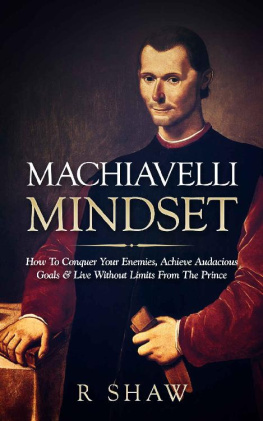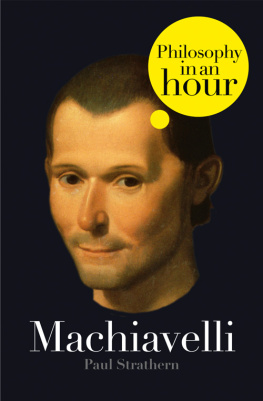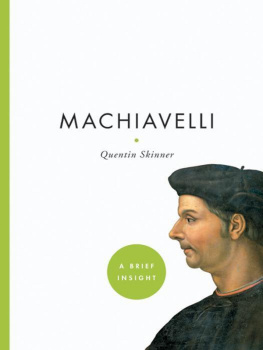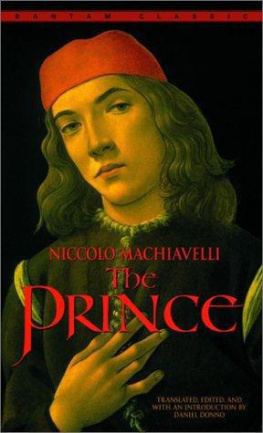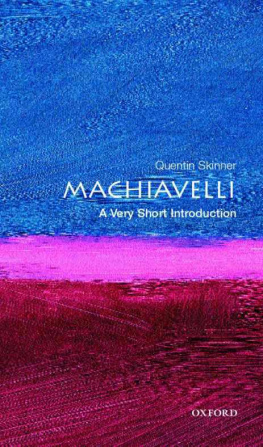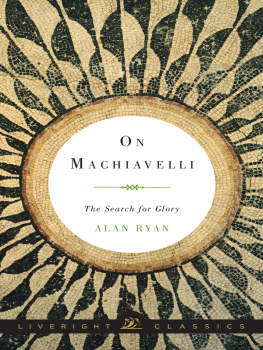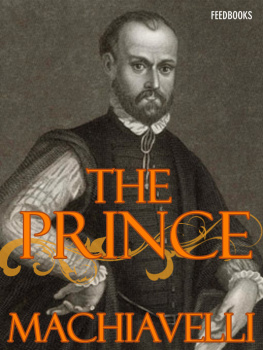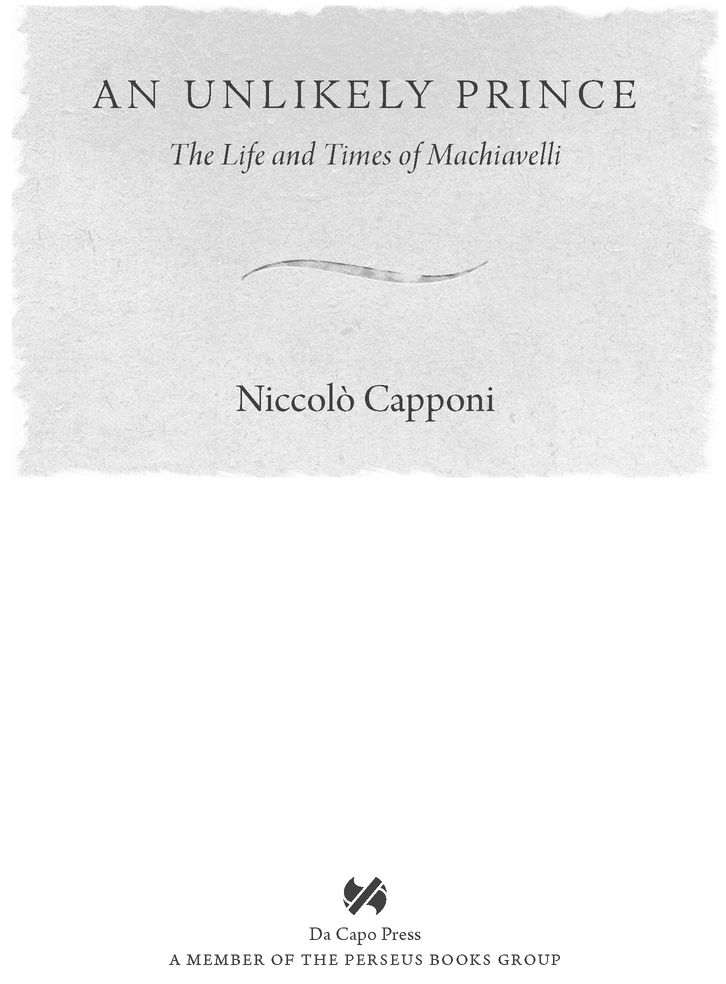Table of Contents
NOTES ON TERMINOLOGY
For the sake of clarity, throughout the book I have used the terms Republic and Republican to indicate the Florentine constitutional settlement and its followers after 1494. Technically, however, Florence had been a republic even before that date, and it continued to be one until 1737, even when the Medici became the citys institutional and hereditary rulers after 1532.
TIME
In the sixteenth century the Italians followed a system of telling time based not on the rotation of the earth but on the hours of daylight. For example, two oclock in the morning would be the second hour after sunset. In addition, different dates were used to mark the start of the new year throughout the period. The calendar in Italy most commonly began on December 25 (commemorating the birth of Christ) or March 25 (commemorating Christs incarnation), the latter being the Florentine usage until 1750. For practical reasons I have used the modern rendering throughout this book, with the year starting on January 1.
CURRENCY AND PRICES
The standard Florentine currency was the florin (fiorino), together with its subdivisions, dating back to the time of Charlemagne, of the lira, the soldo, and the denaro (1 lira = 20 soldi; 1 soldo = 12 denari). In Machiavellis days the standard broad florin (fiorino largo) was worth 6 or 7 lire, the latter value becoming stable around 1515. The Venetian ducat, at the time the international coinage of reference, more or less equaled the fiorino largo. In addition, there existed the gold florin (fiorino largo doro), valued about 7 lire in 1520 and, like the lira and the sealed florin (fiorino di suggello), used as a unit of account. The sealed florin was equal to 4 lire, and in a letter of 1505, Totto Machiavelli mentions that 3 sealed florins were worth 2 gold ducats.
On average during this period, a typical laborer earned about 8 soldi a day, and a skilled worker twice that sum. There were approximately 260 working days a year, and numerous holidaysSundays asideconstantly interrupting the rhythms of labor. The cost of living varied according to the availability of certain goods; for instance, food prices soared in times of want and dropped in times of plenty. However, until chronic price inflation began to occur in around 1525, an adult needed roughly 1.5 to 2 soldi a day for food, while the yearly expenditures for all the necessities of life, food included, totaled around 65 lire per person.
Of course, some people spent well beyond that, and once Machiavelli admitted to squandering 14 soldi for a veal dinner for four at a friends houseindeed, Niccol had a pronounced tendency to live beyond his means. For many, extraordinary expenses always seemed to be lurking just around the corner, and when they did appear they could be crippling, particularly in the event, for example, of a prolonged illness. At the time of his wifes final infirmity, Machiavellis friend and chancery colleague Biagio Buonaccorsi admitted to spending just under a florin a day for her medical care. The cost of giving a daughter away in marriage could also be considerable, and sending one to a nunnery could also be expensive. Even poor religious houses asked for a substantial monetary contribution, 100 lire not being uncommon. Perhaps the thirteenth-century poet Cecco Angiolieri was correct when he described florins to be the best of kin.
PREFACE
Those who arrive in Florence by train may decide not to take a taxi but instead enjoy a leisurely stroll to their final destination. Coasting the gothic-style Dominican convent of Santa Maria Novella, one goes down the via Panzani, and then via Cerretani to the Duomo. Should the imaginary visitor then decide to go north, he will hit the old Medici palace on the via Larga (now via Cavour), and maybe drop in to admire the apotheosis of the once-powerful family fixed in the fresco cycle by Benozzo Gozzoli.
But usually people prefer to proceed along the crowded via Calzaioli, tarted up in the nineteenth century when most of Florences ancient center fell under the pickax of Piedmontese goatherds, whose lack of artistic and historical sensibility makes barbarians of old look a rather civilized and cultivated lot. Even the piazza Signoria, at the end of the above-mentioned road, has been affected by such philistinism, a behemoth of a fake fifteenth-century edifice casting its shadow on the beautiful Medieval and Renaissance monuments in the square.
Matters only get worse on the via Porsantamaria, where the destructions of World War II have been underscored by the vandalism of the post-conflict rebuilding. Only the few old towers left remind us of the areas original flavor. The Ponte Vecchio at the end of the street is still standing, as the Wermacht troopswith impeccable, if distorted, military rationalepreferred instead to demolish the houses at both ends of the bridge in order to deny access to it. Yet, as tragic as the gutting of the Ponte would have been, it could have been rebuilt like the other bridges on the river Arno; but artistic treasures ten times as precious are now lost forever for the sake of its survival. Florence recomposed herself with the same grace of a lady interrupted by a bomb while sipping tea, the poet Cristina Campo would write. But the dames impassivity could not hide the scars the exploding shrapnel had left in her body.
Crossing the bridge and entering the via Guicciardini, one passes on the left the former monastery of Santa Felicita, home of one of the great masterpieces of all times: the Deposition by the maverick painter Jacopo Pontormo, still largely unaffected by the crowds of trippers unloaded by human fishbowls on wheels. A few yards ahead, a plaque on a house, seldom graced by the look of those passing by, tells us that there once lived one of the prophets of united Italy, the first to theorize its freedom by means of a citizens army. Not surprisingly, the inscription bears the date 1869, when certain attitudes were quite fashionable in the whole of the Western world. One wonders if the object of the dedication would have shared such gushing rhetoric, but certainly not recognized the wall supporting itthe original house, like most of those in the via Gucciardini, being reduced to dust by German mines on August 4, 1944.
Like Florence, Niccol Machiavelliwho once lived in the buildinghas in turn been demolished, rebuilt, altered, and repainted, suffering from the ravages of time and of humans. And, once more, akin to what has happened to the city, his dust has been turned into something scarcely recognizable.
In his book The Military Revolution: Military Innovation and the Rise of the West, historian Geoffrey Parker cites the case of an engineer who in 1722 wrote a treatise criticizing some 118 methods of fortification described by some seventy authors, providing then his own solution (the 119th). A similar fate appears to have befallen Machiavelli. Everyone who tackles him has to give a novel interpretation of his life and works, and over the centuries Niccol has been turned into a tug-of-war for the most diverse analysis. From the very beginning Machiavelli became an enclosed hunting ground for critics, and it is thanks to them that he has turned into a character transcending time and physical boundaries: the first political scientist, the first modern philosopher, etcetera. By these standards he could also win the prize for first modern playwright, the first to prove with his personal history that theory is not the same as practice, and the first in fooling generations of commentators.


